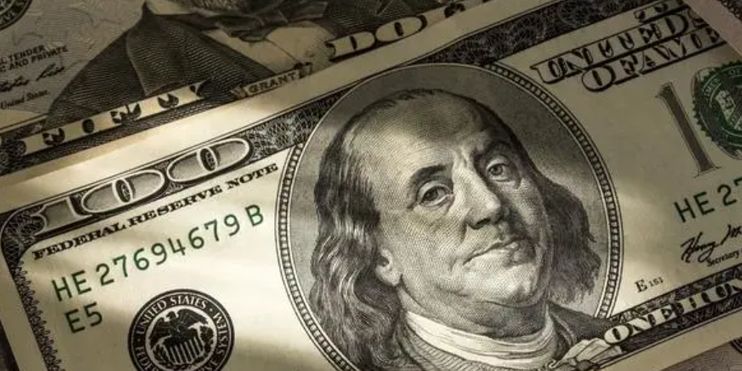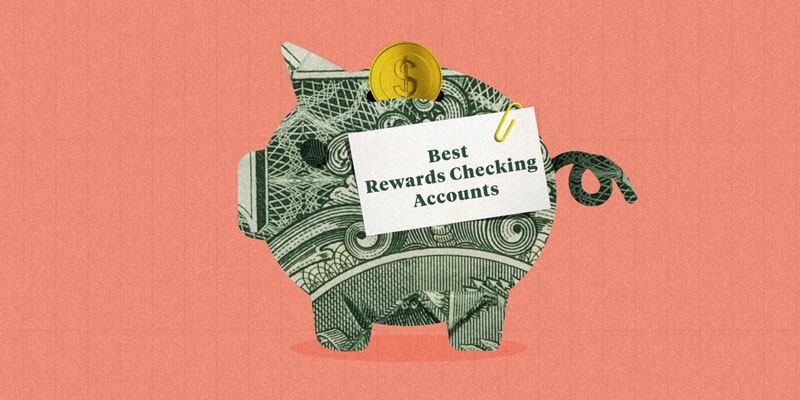As an international currency, the US dollar has many functions. To understand the international role of the US dollar, we must analyze it from multiple angles. A recent article published by the Federal Reserve discussed the international role of the US dollar and argued that from different perspectives, the US dollar’s international status has not undergone significant changes, and it seems that it will take time to achieve the replacement of major international currencies.
For most of the 20th century, the outstanding role of the US dollar in the global economy was supported by the size and strength of the US economy, the stability and openness of trade and capital flows, strong property rights and the rule of law. The depth and liquidity of the US financial market are unmatched by other economies, and there are a large number of extremely safe dollar-denominated assets for investors to invest in. From the perspective of international reserves, as a currency anchor, and its use in transactions, the US dollar is the dominant currency. Compared with the US's share of global GDP, the US dollar plays a larger role in the international arena. In other words, this dominance should not be taken for granted. Compared with the size of its economy, the role played by the US dollar has been far greater.

The international community’s confidence in the US dollar remains strong
A key function of currency is as a means of storing value, which can be stored and recovered in the future without causing a significant loss of purchasing power. One measure of confidence in a currency as a store of value is its use in official foreign exchange reserves. The latest data show that the US dollar accounts for 60% of the world’s open official foreign exchange reserves. This share has fallen from 71% in 2000, but it still far exceeds all other currencies, including the euro (21%), the yen (6%), and the pound (5%). In addition, the decline in the share of the US dollar was replaced by multiple currencies instead of a single currency. Therefore, although countries have diversified their foreign exchange reserves to a certain extent in the past 20 years, so far, the US dollar is still the main reserve currency.
Most of these official dollar reserves are held in the form of U.S. Treasury bonds, and foreign official and private investors have great demand for U.S. Treasury bonds. As of the end of the first quarter of 2021, foreign investors (both official and private) held USD 7 trillion (33%) of tradable Treasury bonds, the other 42% was held by domestic private investors, and 25% was held by the Federal Reserve System. Although the share of U.S. Treasury bonds held by foreign investors has fallen from nearly 50% in 2015, the current share of U.S. Treasury bonds held by foreign investors is equivalent to the share of Eurozone government bonds held by investors outside the Eurozone, and is higher than the share of foreign holdings of British or Japanese government debt.

However, although foreign countries hold a large amount of U.S. Treasury bonds, there are also problems. Professor of Economics at Harvard University believes that the modern version of Triffin’s problem is whether the United States has the ability to persuade investors that the financial capacity of the United States is sufficient to support the huge outstanding debts it is creating. At present, these debts are supported by a seemingly endless demand for safe assets.
Foreign investors also hold large amounts of paper money. Over the past 20 years, the value of US dollar banknotes held overseas has increased, both in absolute value and as a proportion of circulating banknotes. According to estimates by Fed staff, as of the end of the first quarter of 2021, foreigners have more than 950 billion US dollars in US dollar banknotes, accounting for about half of the total US dollar banknotes in circulation.
In addition, many economies use the US dollar as an anchor currency by restricting the volatility of their currencies relative to the US dollar. As emphasized by professors of economics at Harvard University, the use of the US dollar as an anchor currency has increased in the past 20 years. However, the US dollar and currencies pegged to the US dollar account for more than 50% of the basket of currencies.

The US dollar occupies a dominant position in international transactions and financial markets
The international role of currency can also be measured by its use as a medium of exchange. Several recent studies on the currency composition of global trade and international financial transactions have emphasized the dominance of the US dollar in the international arena. The US dollar is the most frequently used currency in global trade. From 1999 to 2019, the US dollar accounted for 96% of the American trade valuation, 74% in the Asia-Pacific region, and 79% in the rest of the world. The only exception is Europe, where the euro dominates.
Partly due to the dominant position of the US dollar as a transaction medium, it is also the dominant currency in the international banking industry. Approximately 60% of international foreign currency liabilities (mainly deposits) and claims (mainly loans) are denominated in U.S. dollars. This proportion has remained relatively stable since 2000 and is much higher than the proportion of the euro (about 20%).
Due to the particularly high demand for US dollar financing during the crisis, foreign financial institutions may face difficulties in obtaining US dollar financing. In response, the Fed launched two plans to ease the pressure on the international dollar financing market triggered by the crisis, thereby alleviating the impact of the pressure on the supply of credit to domestic and foreign companies and households. To ensure the availability of US dollar financing during the 2008-2009 financial crisis, the Federal Reserve and several foreign central banks introduced temporary swap lines, some of which became permanent in 2013. The Federal Reserve has increased the frequency of operations of conventional swap lines and introduced temporary swap lines with other counterparties. The Fed also introduced a repurchase loan to the Foreign and International Monetary Authority (FIMA), which has an account with the Federal Reserve Bank of New York and will be made permanent in 2021.

Both the swap line and the FIMA repurchase mechanism have enhanced the US dollar's status as the world's dominant currency, because participating institutions expect them to obtain stable US dollar funds during the crisis. The swap line was widely used during the 2008-2009 financial crisis and the 2020 COVID-19 epidemic, and the total outstanding amount reached 585 billion US dollars and 450 billion US dollars, respectively. Although other central banks have also established swap lines, the non-US dollar currency swaps provided by the European Central Bank and other central banks have hardly been used. This fact highlights the importance of dollar financing in the operations of many internationally active banks.
The bonds issued by companies in currencies other than their own currencies are also dominated by US dollars. Since 2010, the proportion of foreign currency debt denominated in US dollars has remained at around 60%. This makes the US dollar far surpass the euro, which has a share of 23%.
The many sources of demand for the US dollar are also reflected in the US dollar's share of foreign exchange transactions. The latest central bank survey by the Bank for International Settlements shows that in April 2019, about 88% of global foreign exchange transactions bought or sold US dollars. This share has remained stable for the past 20 years. In contrast, the purchase or sale ratio of the euro in foreign exchange transactions is 32%, which is down from the 2010 peak of 39%.

Overall, the dollar’s dominance has remained stable over the past 20 years
Looking back at the global use of the US dollar in the past 20 years, we will find that the global role of the US dollar is dominant and relatively stable. To illustrate this stability, the article constructed a comprehensive index of international currency usage. The index is calculated based on the weighted average of five indicators used in international currencies, these five indicators are: official currency reserves, foreign exchange transaction volume, foreign currency debt balance, cross-border deposits, and cross-border loans. Since the 2008 global financial crisis, the dollar index has been stable at around 75, much higher than all other currencies. The euro followed closely at around 25, which also remained fairly stable.
The US dollar's status seems unlikely to decline in the short term
The recent challenges to the dollar’s dominance appear to be limited. In modern history, there is only one example of a change in the dominant currency, that is, the replacement of the British pound by the US dollar. The dollar gained fame after the financial crisis associated with World War I, and then the Bretton Woods Agreement of 1944 consolidated its international role.

However, in the long run, the US dollar’s international status faces greater challenges, and some recent developments may promote the use of other currencies internationally.
Strengthening European integration is a possible source of challenges, because the European Union (EU) is a large economy with fairly deep financial markets, free trade in general, and strong and stable institutions. During the COVID-19 crisis, the European Union plans to issue joint guaranteed debt on an unprecedented scale. If fiscal integration progresses and a large and liquid EU bond market is formed, the attractiveness of the euro as a reserve currency may become even greater. This integration may be accelerated by strengthening the EU’s sovereign debt market infrastructure and introducing a digital euro. In addition, if the prominent role of the euro in corporate and sovereign green finance continues to grow, its international status may be improved. However, even if the degree of fiscal integration is further improved, political fragmentation will continue to cause policy uncertainty.
Changes in the payment pattern may also challenge the dominance of the US dollar. For example, the rapid growth of digital currencies can reduce dependence on the US dollar. Changes in consumer and investor preferences, coupled with the emergence of new products, may change the balance of expected costs and benefits to a certain extent, thereby overcoming some of the inertia that helps maintain the dollar's dominance. That being said, technology alone is unlikely to completely offset the long-term US dollar's dominance.
In short, if there are no large-scale political or economic changes that damage the value of the US dollar as a store of value or a medium of exchange, and at the same time, enhance the attractiveness of alternatives to the US dollar, the US dollar is likely to remain the world’s main international currency in the foreseeable future.

Is it true?
The international status of the US dollar has not undergone major changes, and the US dollar will still maintain its role as a major international currency. Is it true?
After the collapse of the gold standard, both domestically and internationally, it is a credit currency system. The foundation of the credit currency system lies in confidence. If users still have greater confidence in the currency, then the currency system can be sustainable.
It cannot be denied that the use of international currencies is network and inertial. Even if some adverse changes occur, the status of international currencies will not collapse instantly. However, when the foundation of international currency use has been eroded a little bit, its future status is worrisome.
Regardless of the size of the economy, the depth and breadth of the financial market, or the current international use of the US dollar, it seems that the international status of the US dollar can still be maintained for a period of time. But the United States seems to be digging the corner of the dollar itself, mainly because of the weaponization of the dollar and the confidence of the international community in dollar assets.
From the perspective of the weaponization of the US dollar, other economies and institutions seem to be at risk of sanctions at any time, and sometimes this risk is fatal. After the interests of the United States are touched, no one is safe. The sanctions stick may fall at any time, which will seriously affect the confidence in the use of the US dollar.
From the perspective of confidence in US dollar assets, how can the United States convince the international community that it can repay its ever-increasing debt? So far there has been no default. If a default occurs, will it have a serious impact on the US dollar?



